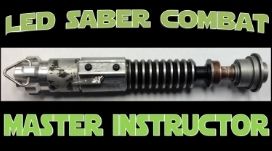So I’m planning out my first PC 2.0 build and I’m trying to figure out what resistor to use for an accent LED. The LED that I want to run off the board is a green illuminated switch LED (3.3V 20mA). The board provides 3.3.V for the accent LED pads, so according to the calculations detailed on page 12 of the manual: (3.3 – 3.3) / 0.02 = 0? Is this correct? And if so, I’m guessing I should still put a resistor on the LED to be safe, right? I see that the store carries a few 1 ohm resistors (1 ohm 5w; 1 ohm 2w), which one would work better? Does it even matter?
Hmm … that one question just turned into five.
If I’m way off the mark on this, please let me know. Appreciate the help!






 Reply With Quote
Reply With Quote










Bookmarks